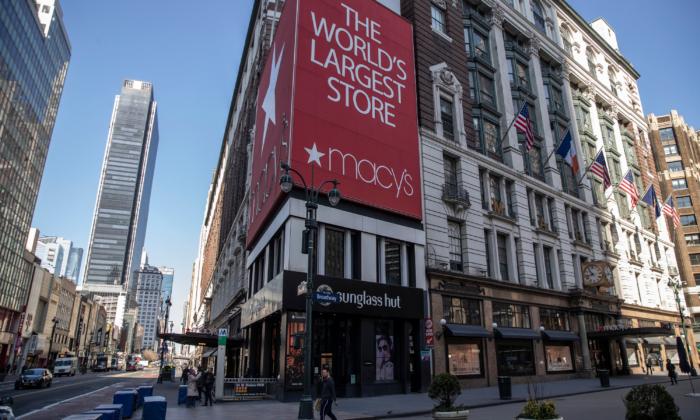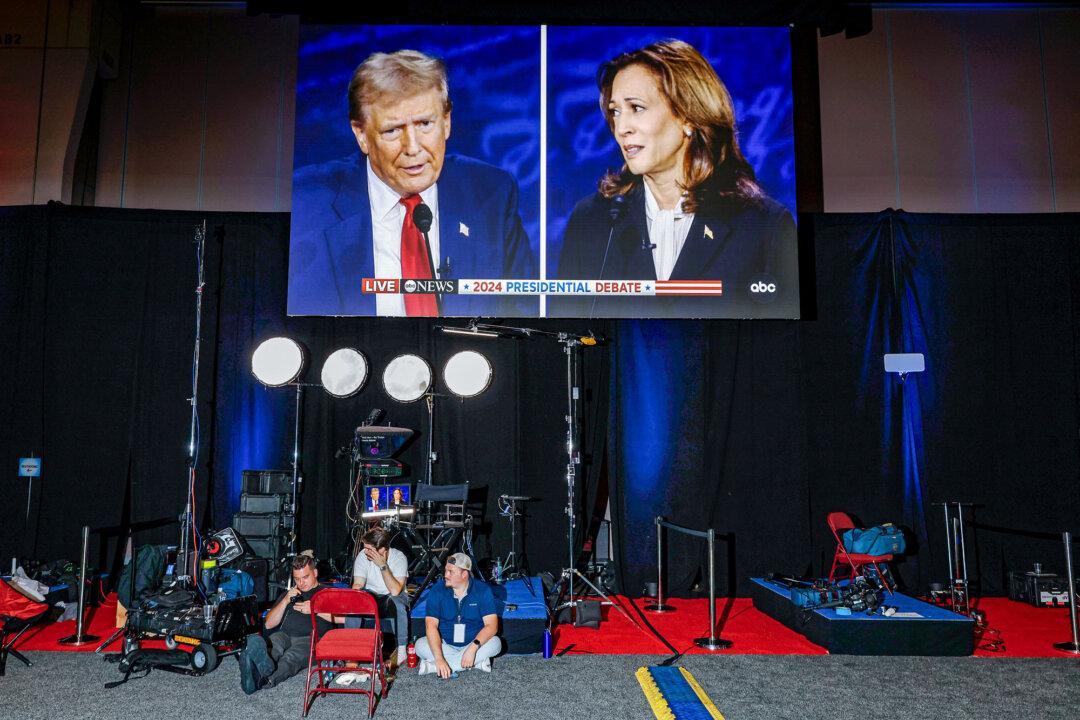Affected workers will continue to receive health benefit coverage at least through May, with Macy’s paying their premiums. The company expects to begin bringing workers back on a staggered basis once its retail business restarts.
Macy’s, one of the nation’s largest retailers, closed its stores on March 18 to do its part to help stop the spread of the CCP (Chinese Communist Party) virus, commonly known as novel coronavirus, which causes the disease COVID-19. Since then, the company has taken a range of steps to stay afloat, including suspending dividend payments, drawing down its line of credit, freezing hiring and spending, pausing capital projects, canceling orders, and extending payment terms.
The retailer’s online business is still operating.
Macy’s didn’t specify how many employees would be furloughed and didn’t respond to a request by The Epoch Times for details.
“We’re expecting the unemployment rate to spike,” Bullard said, noting that the federal relief package will help those who lose their jobs. “But once the virus goes away, we’ll be able to return to normal.
“Hopefully, if this all works smoothly—and there’s a lot in the legislation as well—we’ll be able to come out on the other side and get the economy rocking again.”
The move by Macy’s is a sign that even big-name retailers are taking drastic steps to cushion the blow from the massive losses from in-store sales.
Nordstrom said last week it was furloughing a portion of its corporate staff. Shoe company Designer Brands Inc., which operates DSW Designer Shoe Warehouse, furloughed 80 percent of its workers, effective this past weekend.
The day before the Macy’s announcement, President Donald Trump extended federal social distancing and sanitary guidelines until April 30. Although the guidelines aren’t compulsory, a vast number of Americans and businesses have complied in order to help the nation mitigate the losses from the pandemic.
Elsewhere, such as in New York, the lockdowns are mandatory. New York Gov. Andrew Cuomo on March 29 extended the statewide stay-at-home order for two weeks.
Analysts expect more furloughs to come as retailers scramble to pay their employees from fast-dwindling cash reserves. Labor is the single biggest monthly fixed cost for retailers, according to investment research firm Cowen & Co. The firm recently reported that department stores have enough cash to make it to about five to eight months with their stores temporarily closed. Macy’s has enough for five months, Cowen said.
When announcing the temporary closures, most retailers said they would keep paying their workers, but they were looking at a two-week timetable. That moment has now passed and the furloughs have become increasingly necessary as the CCP virus rapidly spreads.
Nationwide, there were more than 160,000 confirmed cases and almost 3,000 deaths from COVID-19 as of March 30. New York is the epicenter of the outbreak, with more than 40 percent of the confirmed cases.
Unlike layoffs, furloughed workers remain employed by their companies without pay. As the pandemic mitigation measures continue to put stress on retailers, it remains to be seen whether some of the furloughs become layoffs.
Rent the Runway confirmed earlier March 30 that it was laying off its retail store staff and said it may not be able to reopen its stores that temporarily shuttered earlier this month. Its online subscription service still continues to operate.
Swedish retailer H&M said earlier this month that it may be forced to permanently lay off some of its employees after temporarily closing most of its stores globally. Analysts believe that already ailing stores with heavy debt loads such as J.C. Penney, and J. Jill may have to dramatically close more stores or be pushed closer to bankruptcy.
Trump has suggested that the effects on the economy from protracted lockdowns could surpass that of the pandemic itself. The president wants to open up the economy as soon as possible, initially hoping that some measures would be relaxed by Easter. The president now expects the peak of the outbreak to arrive in two weeks.
“Challenging times are ahead for the next 30 days, and this is a very vital 30 days. We’re sort of putting it all on the line this 30 days. So important because we have to get back,” Trump said at the White House on March 30.
“But the more we dedicate ourselves today, the more quickly we will emerge on the other side of the crisis, and that’s the time we’re waiting for. The more we commit ourselves now, the sooner we can win the fight and return to our lives and they will be great lives, maybe better than ever.”
The White House is expected to soon release guidelines to assist states and localities in making decisions on whether to relax, tighten, or maintain social distancing measures.





